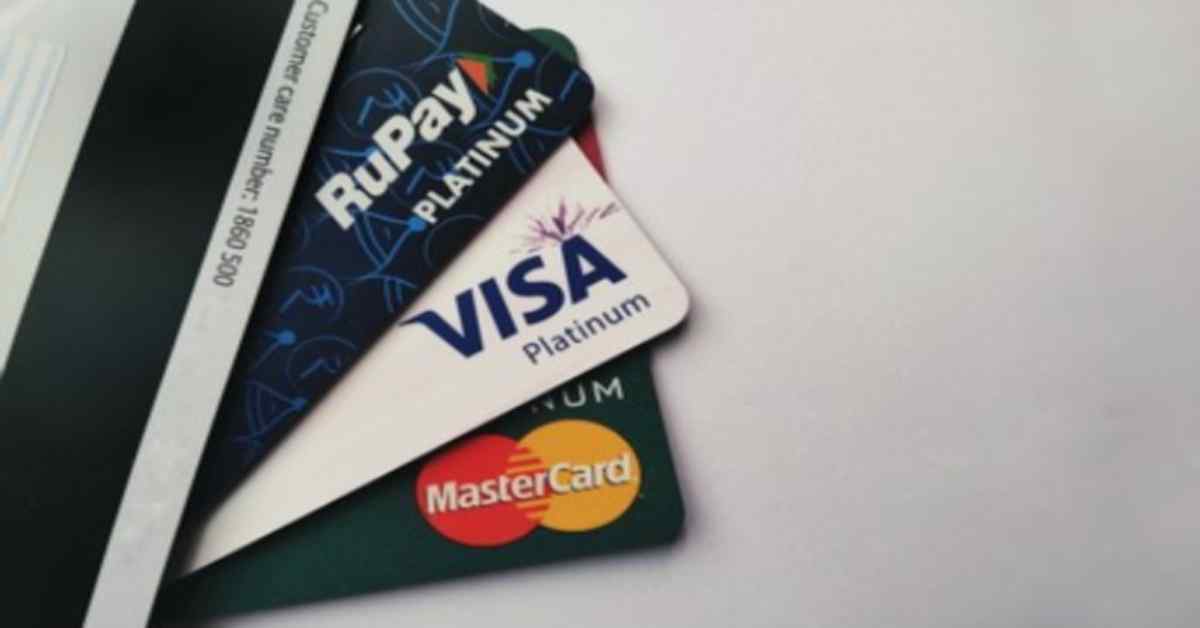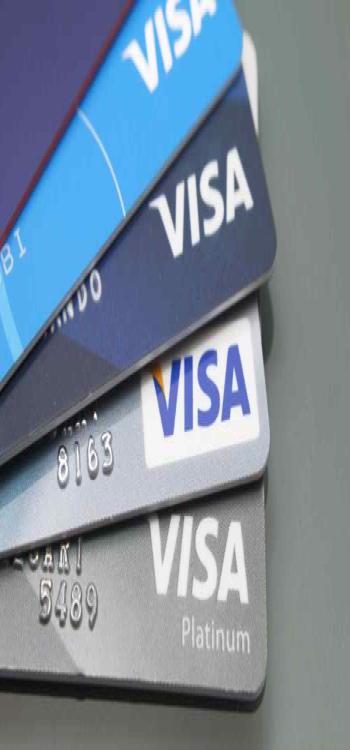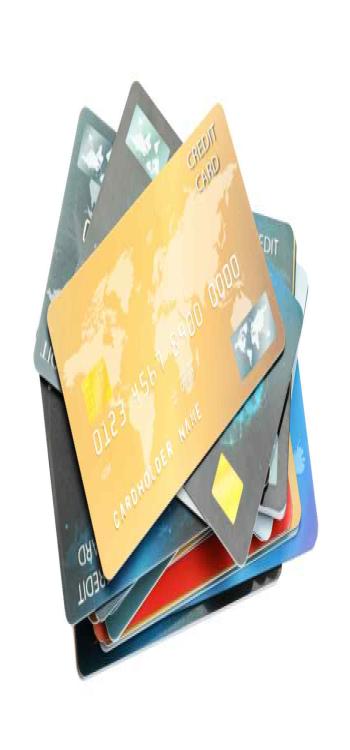In this article, we will be uncovering the differences between RuPay Card and Visa and Mastercard. The National Payments Corporation of India developed the RuPay Card as a domestic payment card system in India. The Reserve Bank of India wanted a local, open-loop, multilateral payment system, so they made it happen.

Things we covered for you
Visa and Mastercard, on the other hand, are the two leading international card payment systems in the world. They are accepted in more than 200 countries and regions around the world and have been around for many years.
The differences between these three card payment systems are quite stark, and it’s important to understand them. This article will delve into the features and advantages of each system, outlining the pros and cons of each.
By the end of this article, readers will have a better understanding of the differences between a RuPay Card and a Visa/Mastercard. They will also be able to make an informed decision about which one best suits their needs. With the right payment system, you can ensure a smoother and more efficient payment process.
Introduction to RuPay Card: Exploring the Features and Benefits

RuPay is an Indian payment card network that was developed and launched by the National Payments Corporation of India (NPCI) in 2012. RuPay provides a domestic card payment infrastructure in India and is accepted at all automated teller machines (ATMs) and merchant outlets across the country. It aims to provide better and more affordable payment services to consumers in India.
RuPay cards offer a range of features and benefits for users including
- Security and Convenience: RuPay cards offer enhanced security to protect users’ financial information and transactions. The card is also equipped with additional security features such as two-factor authentication and secure encryption. Moreover, the RuPay card is convenient to use as it is accepted in all ATMs and online and offline merchants.
- Easy Transactions: RuPay cards allow users to make payments and transfer funds easily, quickly and securely. They can be used to make payments at retail stores, online stores, and more. Furthermore, users can also withdraw cash from any ATM in India.
- RuPay Rewards: RuPay card customers can earn rewards points on their purchases. These reward points can be redeemed for cashback and discounts on future purchases.
- Travel Benefits: RuPay card holders can enjoy discounts and cashback offers when booking flights, hotels, and other travel services in India.
Overview of Visa and Mastercard
Visa Card

Visa cards are debit and credit cards that operate on the Visa network. To access the network of the organization, financial institutions collaborate with Visa. Visa cards typically include a microchip, a magnetic stripe, and a 16-digit account number. Different types of Visa cards
Read: How To Make Indian Oil Gas Bill Payment: Complete Guide
Visa is one of the most recognized credit cards available today and is accepted at over 46 million locations around the world making it the winner when it comes to international transactions in the Rupay vs Mastercard debate. Its cards offer the flexibility to make purchases at multiple locations, give cash back and rewards and receive fraud protection. Visa also offers several different types of cards with different borrowing limits and interest rates.
Mastercard

A processor of payment networks is Mastercard. Financial institutions that cooperate with Mastercard to offer Mastercard payment cards only have those cards processed through the Mastercard network. The fees that Mastercard charges issuers depending on the gross dollar volume of each card are its main source of income.
Mastercard is accepted at over 32 million locations, making it another popular choice for credit card users. Its cards offer many of the same features as Visa, such as rewards programs, cashback, and fraud protection. Additionally, Mastercard offers a suite of digital services to allow you to securely manage and pay bills online.
Read: Noida Water Bill Payment: Fast and Reliable Online Transactions for Residents
Visa Card and Mastercard Features
Visa and Mastercard are two of the most widely accepted credit cards in the world. They are accepted by merchants everywhere, making it easy and convenient to shop, dine, and travel. Both cards offer a range of features, including rewards and cash-back programs, fraud protection, and more. Additionally, both offer cashback programs, allowing you to receive cashback on purchases made. Both cards also support contactless payments, allowing you to make purchases without inserting or swiping your card.
Benefits of Visa Card
Visa cardholders enjoy a number of benefits, including discounts at certain retailers, exclusive access to special events, and the convenience of not having to carry cash. Visa cards are also accepted by a wide range of businesses, making them a convenient way to pay for everything from groceries to travel. They are also safe and secure, with state-of-the-art security features that protect against fraud and theft.
Benefits of Mastercard
There are plenty of reasons to use a Mastercard, especially if you’re a frequent traveller. For starters, Mastercard is one of the most widely accepted credit cards in the world, so you’re unlikely to have any problems using it wherever you go. Additionally, Mastercard comes with a host of great benefits, including travel insurance, extended warranty protection, and even concierge services. You can also use your Mastercard to make purchases online and in person, anywhere that Mastercard is accepted. Mastercard also offers a variety of rewards and perks, such as cashback on certain purchases, and discounts at certain retailers. Plus, if you’re a member of a Mastercard Rewards program, you can earn points on every purchase you make, which can be redeemed for free travel, merchandise, or cash back. So whether you’re looking for convenience, security, or rewards, a Mastercard is a great choice.
Read: Gurugram Water Bill Payment: Fast, Secure, and Hassle-Free
Benefits Of Rupay Cards
RuPay is an Indian payment card scheme introduced by the National Payments Corporation of India (NPCI). It provides several benefits to cardholders and the overall Indian financial system. Here are some key benefits of RuPay card over Visa:
1. Widely Accepted: RuPay cards are accepted at a large number of ATMs, point-of-sale (POS) terminals, and e-commerce websites across India. They have a wide acceptance network, making them convenient for everyday transactions.
2. Lower Processing Fees: Compared to international payment cards schemes like Visa and Mastercard, RuPay cards have lower transaction processing fees. This makes them cost-effective for merchants and banks, ultimately leading to more affordable services for cardholders.
Read: Mahanagar Gas Limited Bill Payment: Everything You Need to Know
3. Promotes Financial Inclusion: RuPay cards have played a significant role in promoting financial inclusion in India. They have been instrumental in providing banking services to unbanked and underbanked populations, particularly in rural areas. RuPay cards are often linked to Jan Dhan accounts, which are basic bank accounts for individuals who do not have access to formal banking services.
4. Domestic Scheme: RuPay is a domestic payment card scheme, which means it operates within India. This offers advantages such as reduced dependency on international networks and better control over transaction data within the country.
5. Customized for Indian Needs: RuPay cards are tailored to meet the specific needs of Indian customers. They often come with features like insurance coverage, discounts on fuel purchases, and other benefits targeted at the Indian market.
6. Enhanced Security: RuPay cards employ advanced security features, including the use of EMV chip technology, to protect against fraudulent transactions. This ensures a higher level of security for cardholders.
7. Government Initiatives: RuPay cards have gained popularity through various government initiatives like Direct Benefit Transfer (DBT), where subsidies and welfare payments are directly credited to beneficiaries’ RuPay cards. This has facilitated the efficient and transparent distribution of government funds.
8. Co-branded Cards: RuPayhas collaborated with various banks and financial institutions to offer co-branded credit and debit cards. These cards provide additional benefits such as reward points, cashback offers, and discounts on specific purchases.
Disadvantages of Rupay Cards
While RuPay cards offer several advantages, there are also some potential disadvantages to consider:
1. Limited International Acceptance: One of the main disadvantages of RuPay cards is their limited acceptance outside of India. Unlike international payment card schemes like Visa and Mastercard, RuPay cards may not be widely accepted for transactions abroad. This can be a drawback for individuals who frequently travel or make international purchases.
2. Restricted Usage: RuPay cards are primarily designed for domestic use within India. While they can be used for online transactions within the country, they may not be accepted on all international e-commerce websites. This can limit the options available to cardholders for certain online purchases.
3. Lesser Reward Programs: Compared to international payment card schemes, RuPay cards may offer relatively fewer reward programs, cashback offers, and other incentives. This can be a drawback for individuals who value such benefits and prefer to earn rewards on their card transactions.
4. Limited Service Provider Options: The number of banks and financial institutions issuing RuPay cards is relatively smaller compared to international payment card schemes. As a result, cardholders may have a limited choice when it comes to selecting a service provider or accessing specialized card features.
5. Perception and Awareness: RuPay cards have faced challenges related to brand recognition and awareness, especially when compared to well-established international payment card schemes. This could potentially create a perception that RuPay cards may not be as widely accepted or reliable as their international counterparts.
6. Technology and Innovation: While RuPay cards have made significant progress, they may still face certain limitations in terms of technological advancements and innovative features. This could impact the availability of cutting-edge payment solutions and digital banking services that are more prevalent with international payment card schemes.
How is Visa Different from Mastercard?
There are many tiers of card membership available for both Visa and Mastercard, each with its own set of perks and advantages. These levels can be compared as follows:
Mastercard World vs. Visa Signature
Visa Signature and Mastercard World are two levels above each network’s “regular” level that have a lot to offer. While both products provide perks for purchase protection and insurance, travel advantages, and emergency assistance, Visa Signature gives cardholders a disproportionately greater number of these.
Roadside assistance, extended warranties, a Global Entry statement credit, and other benefits are available to Visa Signature subscribers. Although not quite as numerous, Mastercard still has some more products.
Mastercard World Elite vs. Visa Infinite
The highest levels of Visa and Mastercard are comparable to the level below and include all the advantages of the preceding level while also enhancing them. For instance, Mastercard World Elite cardholders get access to Priceless Cities, the World Elite Concierge, and improved offers and experiences.
All of the advantages of Visa Signature are also available with Visa Infinite, however, the latter’s advantages are somewhat improved. For instance, both offer reimbursement for trip delays, but Visa Signature members receive $300 after a 12-hour delay, and Visa Infinite members receive $500 after a six-hour delay.
Which Card is Better Rupay or Visa or Mastercard?

To simplify the process and make it simpler for clients to determine whether Visa or RuPay is superior, it is important to understand the difference between Visa and Rupay debit card and the difference between Visa card and Rupay card of credit. The two cards are compared using the following criteria:
- Nationality
While Visa or MasterCard are international system cards, RuPay Card is an Indian domestic card.
- The Processing Fee
RuPay cards have a much-reduced processing fee because domestic processing is used for local transactions. Visa or MasterCard are significantly more expensive than RuPay cards since processing for them takes place abroad.
- The Speeds Of The Transaction
Transactions probably complete more rapidly with RuPay cards than with VISA cards or MasterCard due to the fact that RuPay cards are handled locally, as was already mentioned.
- Fee Schedule
An enrollment fee or a quarterly charge for the RuPay card is not necessary for Indian banks to pay. However, Banks must pay an initiation charge and a quarterly fee for VISA cards or MasterCard.
- Universal Acceptance
Only Universal local payment gateways accept the RuPay card, which limits the number of transactions compared to VISA. With their VISA cards or MasterCard, customers may make purchases both locally and internationally.
- Data Processing And Verification
Visa or MasterCard is an American firm, therefore when we use their card, the server goes to their server for data processing and verification, which speeds up processing. RuPay card processing is quick since it is exclusively used in India for data processing and verification.
- Ingenuity And Presence
RuPay cards are only offered locally, although the card association is trying to break into the international market. This contrasts with VISA or MasterCard, which is already a well-known card associated with consumers having the capacity to make withdrawals and transactions anywhere in the globe.
- Safety And Security
Because their activities are restricted to India exclusively, RuPay cards are safer than global cards. Data is thus only transferred across national gateways. The danger of data theft is significant when using a Visa Debit Card or MasterCard since customer data are handled globally.
Which One to Choose?
There are many factors to consider when choosing a credit card, and the right choice for you may depend on your circumstances. If you’re looking for a card with low fees and good rewards, RuPay, Visa, and Mastercard are all excellent options. If you’re looking for a card with no foreign transaction fees, Visa and Mastercard are both good choices. And if you’re looking for a card with a 0% intro APR period, RuPay credit cards are the best option. However, if you travel frequently, you may want to choose a card that offers travel perks, such as free checked bags or priority boarding. Ultimately, the best credit card for you is the one that best meets your needs.
Plastic Money
Any form of ATM card is known as plastic money when it is used for a transaction at a location where hard currency is present, and the transaction that results from it is referred to as a cashless payment. Any ATM, Visa, MasterCard, or RuPay card can be used to complete the transaction.
Benefits of Plastic Money

Numerous advantages of plastic money include:
- Living Cashlessly
In addition to simplifying our lives, plastic money has also eliminated the inconveniences associated with carrying cash. We may travel the world with some of the greatest credit cards without having to worry about bringing cash.
- Increased safety
The reduction in thefts and crimes is one benefit of utilizing credit or debit cards. It is challenging and requires special skills to hack a card’s PIN. As a result, owners of debit and credit cards can feel somewhat secure about the protection of their money.
- Transaction simplicity
Online payments, cash transfers, and other transactions may all be completed easily with the use of credit cards and debit cards. Payments using plastic money may be made from any location and are exceedingly simple. In addition, many online merchants provide discounts for credit and debit card purchases.
- Exciting offers and reductions
Every issuer of credit and debit cards provides promotions and savings on retail purchases. You may use them to increase your savings and get rewards on purchases.
- Financial Flexibility
A person can use a credit card to conduct a transaction and make a purchase even if they lack the necessary cash. It is very helpful, especially if you don’t have much money. Credit cards also reduce the need to rely on others for financial assistance in an emergency. You can fund your need using a credit card and then pay it back over time in instalments. A credit card is also simple to obtain. The credit card is yours as long as you satisfy the requirements set forth by your bank for eligibility.
- Travel cost savings
Travelling without plastic money might be costly. Credit and debit cards provide access to lounges and fantastic savings on travel reservations. Plastic money is a must if you’re travelling because you can’t get the same advantages with cash.
The distinctions between these three card payment methods are apparent, and it is critical to comprehend them. We have outlined the distinctions between RuPay vs Visa Card vs MasterCard in this post. This article explores the benefits and characteristics of each system, describing both its benefits and drawbacks. After reading this article, readers should have a better knowledge of how a RuPay Card differs from a Visa or Mastercard. NoBroker is a property listing platform for rentals. NoBroker offers different types of payment options including RuPay, Visa, and Mastercard. To know more visit the NoBroker website.

FAQ’s
Ans. The country’s main organization in charge of retail payments, NPCI, created RuPay. Under the Payment and Settlement Systems Act of 2007, the Reserve Bank of India (RBI) and the Indian Banks’ Association (IBA) were assigned the responsibility of developing a reliable electronic payment and settlement system for the country of India.
Ans. All domestic bank debit and credit card transactions go via network switches managed by MasterCard and VisaCard, both of which are international financial services corporations with headquarters located in other countries. The introduction of the Rupay, however, would do away with the need for this connection.
Ans. The RuPay Debit card is accepted at all POS, ATM, and online retailers in India. The RuPay Debit card may be used for overseas transactions at any POS, ATM, and online store that supports Discover Financial Service (DFS).
Ans. The United Arab Emirates, Bhutan, and Singapore now accept RuPay-based cards and UPI in their nations, while Nepal only permits the use of RuPay cards, he continued. The minister was replying to a question about if there was a plan to make Rupay and UPI available worldwide.
Ans. Indian NRIs (Non-Resident Non-Citizens) are also eligible to apply for this card, as are locals. To apply for a RuPay card, people must have one of the accounts listed below: Present Balance. Account for saving










